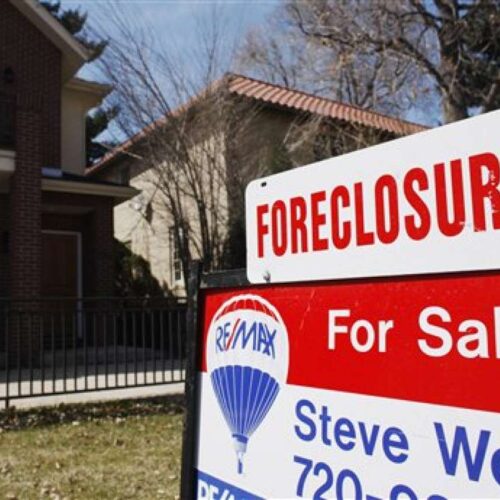Introduction
In a new report, the Federal Bureau of Investigation pats itself on the back for using “sophisticated investigative techniques” to target mortgage fraudsters. The FBI’s 2010 “Year in Review” mortgage fraud report says the agency has used wiretaps, undercover operatives and “tactical analysis coupled with advanced statistical correlations and computer technologies.”
Not everyone is impressed.
Consumer advocates say the FBI is missing the big picture, focusing its investigative muscle on small-time crooks and turning a blind eye to misconduct by big banks.
While millions of homeowners have been put at risk by dishonest tactics used by the mortgage industry, these advocates say, the FBI has targeted low-level lender employees and street-level fraudsters.
Richard Eskow, a senior fellow with the Campaign for America’s Future, a progressive think tank, calls the new report the latest example of the “pseudo-investigatory approach” of the FBI, the Justice Department and the Obama administration in the aftermath of the mortgage meltdown.
“The only thing worse than doing nothing is to do what they’ve done―try to hoodwink the public into thinking they’re doing something,” Eskow told iWatch News.
The Obama administration, Eskow claims, has taken the view that the nation’s largest banks are too important to the economy to be threatened by criminal investigations and indictments. “Too Big to Fail,” he says, also means “Too Big to Jail.”
A telephone call to the White House press office Monday afternoon wasn’t immediately returned.
The FBI did not immediately respond to a request for comment from iWatch, but said in its report that it has “continued to dedicate significant resources” to the threat of mortgage fraud.
“The FBI continues to enhance liaison partnerships within the mortgage industry and law enforcement,” the report says. “As part of the effort to address mortgage fraud, the FBI continues to support 25 mortgage fraud task forces and 67 working groups.”
There were 3,129 pending mortgage fraud investigations in fiscal year 2010, a 12 percent increase from 2009 and a 90 percent increase from 2008. According to FBI data, 71 percent of all pending investigations involved dollar losses of more than $1 million.
The FBI offices most active in investigating mortgage fraud were Las Vegas, Los Angeles, New York, Tampa, Detroit, Washington, Miami, San Francisco, Chicago, and Salt Lake City, the agency said.
The report says mortgage fraudsters “recruit people who have access to tools that enable them to falsify bank statements, produce deposit verifications on bank letterhead, originate loans by falsifying income levels, engage in the illegal transfer of property, produce fraudulent tax return documents, and engage in various other forms of fraudulent activities.”
Suspicious Activities
One source of information that the FBI uses to launch investigations are Suspicious Activity Reports, or SARs, filed when a financial institution sees suspicious behavior or patterns of questionable transactions. The Financial Crimes Enforcement Network, or FinCEN, an arm of the Treasury Department, tallies the reports. While SARs are far from a guarantee that a crime has taken place, their numbers are considered important indicators of trends. As iWatch News previously reported, the increase in SARs could be leading to more mortgage fraud investigations.
There were 70,533 mortgage fraud-related SARs in 2010, a 5 percent increase from 2009. Those reports revealed an estimated $3.2 billion in losses, a 16 percent increase over the previous year.
In June 2010, the FBI and the Department of Justice announced a mortgage fraud takedown referred to as Operation Stolen Dreams. The sweep targeted mortgage fraudsters throughout the country and was the largest collective enforcement effort ever brought to bear in combating mortgage fraud, the agency said.
Operation Stolen Dreams involved 1,215 criminal defendants and included 485 arrests and 336 convictions. The defendants were allegedly responsible for more than $2.3 billion in losses.
Diane Thompson, an attorney with the National Consumer Law Center, a nonprofit based in Boston, said the FBI usually operates under the assumption “that lenders lose money when fraud happens.” But, she said, the truth is that lenders often profit from fraud by fooling borrowers into paying too much for their loans and by using inflated appraisals and other dishonest tactics to pump up their loan volume.
Thompson said the FBI’s annual mortgage fraud report is useful in providing a sense of how common low-level fraud is, but “it doesn’t look at any of the macro questions. It doesn’t get at how systemic fraud is. At what level is fraud being facilitated, encouraged or condoned by large institutions?”
Thompson and other critics say the FBI’s focus on individual wrongdoers or cliques of fraudsters allows big lenders to argue that they’re victims of “rogue employees” or, in worst case scenarios, “rogue branches.”
Ameriquest Capital Corp., the nation’s largest subprime lending empire at the height of the boom, agreed to pay a $325 million mortgage fraud settlement in 2006 after an investigation by state banking regulators and attorneys general around the nation. The state authorities accused its Ameriquest Mortgage subsidiary of using bait-and-switch salesmanship, inflated appraisals and other deceptions to rip off homeowners.
Executives at Ameriquest, which stopped making loans in 2007, blamed any problems on a handful of renegade employees. The FBI investigated fraud cases that resulted in convictions of low-level Ameriquest workers, but didn’t press cases higher up the corporate chain.
John Taylor, executive director of the National Community Reinvestment Coalition, a nonprofit based in Washington, believes that “bigger lenders hide behind loan officers who they compensate with a salary structure that rewards aggressive lending behavior that produces big volume and highly profitable loans.” When these loan officers are caught in wrongdoing, Taylor says, the banks say they were “renegade loan officers” who “weren’t following guidelines.”
This is a smokescreen, he says, “given that these loans are all computerized and heavily documented” so that everyone from the loan officer to managers know exactly what each employee and branch office is doing.
Sending a message
The Obama administration’s efforts to portray itself as tough on financial crime have been the subject of debate.
The Justice Department told the New York Times earlier this year: “The Department of Justice is aggressively pursuing financial fraud cases throughout the country, including hundreds of defendants charged with investment frauds and Ponzi schemes, securities and commodities fraud, insider trading, mortgage fraud, bank fraud and other schemes.”
Tom O’Keefe, president of the National Association of Investment Professionals, told iWatch News on Monday that the Department of Justice prefers to “go after the ‘little people’ who don’t have the resources and knowledge to defend themselves. This allows the DOJ to say they did something and not ruffle the feathers of the powerful on Wall Street.”
Along with Operation Stolen Dreams, which focused on mortgage fraud, the government also embarked last year on an initiative it called Operation Broken Trust, a crackdown on investment fraud that it said had resulted in criminal and civil actions against hundreds of wrongdoers who had cost their victims billions in losses.
In announcing the results of Operation Broken Trust in December, U.S. Attorney General Eric Holder said the government was “sending a strong message” that “cheating investors out of their earnings and savings is no longer a safe business plan―we will use every tool at our disposal to find you, to stop you, and to bring you to justice.”
Consumer advocates and media organizations quickly poked holes in the data.
The New York Times reported that the success of the operation was “something less than it appears. Some of the cases were initiated before the Obama administration took office. Others got under way before President Obama created . . . the Financial Fraud Enforcement Task Force in November 2009, and many of them were well on their way to completion by the time the task force began its crackdown on Aug. 16.”
The Times noted that the government’s statistics also included “considerable overlap of criminal and civil cases, which results in double-counting of many of the defendants, losses and victims.”
In the news release outlining the successes of Operation Broken Trust, Robert Khuzami, the Securities and Exchange Commission’s enforcement director said “fraud by well-known companies or high-profile executives gets the biggest headlines, but other scams are equally devastating to hard working families and retirees. Victims want justice and don’t much care who the fraudster is or how unique the fraud.”
Read more in Inequality, Opportunity and Poverty
Finance
Obama’s new plan for underwater mortgages may be too little too late
Earlier programs helped only a few distressed homeowners




Join the conversation
Show Comments